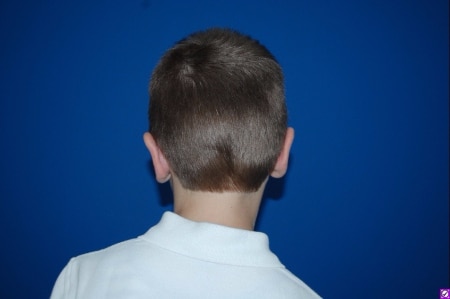What is Ear Surgery?
Otoplasty, better known as ear surgery, is a cosmetic procedure to improve the appearance of the ears. Ear Surgery does not affect hearing, and provides significant psychological benefits to anyone who is teased about ear size and/or shape, has had a serious ear injury, or simply wants to improve his or her appearance. These procedures include manipulating the cartilage of the ear and removal of portions of the posterior ear skin in an attempt to produce a more balanced appearance to the ear.
Benefits of Ear Surgery
The process of setting protruding ears closer to the head is also referred to as Ear Pinning. Otoplasty may also be helpful in repairing the following:
- Abnormally Small Ears
- Large, stretched or torn earlobes
- Lop Ear
- Cauliflower Ear (resulting from repeated trauma)
- Earlobes with large creases and wrinkles
Am I a Candidate for Ear Pinning?
Ear Surgery can be performed on any individual that is self-conscious about their ears, but it is typically performed on ages 4 to 14. The ears are usually fully developed by the age of 4, so corrective surgery at a young age can help improve self-confidence. This surgery has a long history of successful results and patients are usually extremely happy with the overall appearance of their new surgically altered ears. Patients must be in good general health and have realistic expectations for their end result.
How the Otoplasty Procedure is performed
The procedure begins with a small incision behind the ear. This incision will be made in the natural crease to minimize visible scarring. Once this incision is made, the cartilage is sculpted or bent to achieve the desired appearance. Some cases require skin removal in order to manipulate the cartilage properly and create a less protruding ear.
Once the ear has been sculpted, sutures are used to hold the ear in position and bandages cover the wound until healing is complete. Your doctor may choose to operate on both ears, even if only one is protruding, to provide symmetry.
Ear Surgery Before and After Photos


Click Here to view more before and after photos
How Long Does Otoplasty Take to Perform?
Ear Surgery is an outpatient procedure lasting about 2 to 3 hours.
Will Anesthesia Be Used During My Ear Pinning Procedure?
Depending on the age of the patient, general or local anesthesia may be used. Typically, younger patients will require general anesthesia while older patients can be treated with local anesthetic and sedatives. During your consultation, we will discuss your options and develop a treatment plan that is best for you or your child.
Patient Testimonial
“The office staff if fantastic. The Elite team are professional, timely and very thorough. I didn’t feel rushed or pressured to move quickly or make decisions. Dr Cullen is great. Knowledgeable, kind and thorough. He answered all my questions and was very professional.”
Otoplasty Recovery
Patients typically do not feel much pain after surgery, but there may be an achy or throbbing feeling for a few days. Medication may be prescribed to help alleviate any discomfort. A few days after surgery, the bandages are replaced with a surgical dressing that is worn for another week. As the surgical dressing is removed, so are the stitches. Patients are advised to avoid sleeping on their sides for 2 weeks after surgery. Normal, light activity may be resumed after one week while being mindful of the stitches still in place.
Ear Pinning Scarring
There will be faint scars behind the ears once they have healed, but these will fade over time. Generally, these scars are virtually invisible due to their placement in the crease of the ear.
What are the risks of Ear Surgery?
Complications after ear surgery are rare and usually minor. It is possible that a blood clot may develop on the ear or that the cartilage will get infected. Although this could clear up on its own, antibiotics may also be prescribed. As with any surgery, it is possible that the patient may not be completely satisfied with their results. It is important to remember that even natural ears are not entirely symmetrical, so completely symmetrical ears after surgery should not be expected.
Schedule a Consultation
If you’re considering ear surgery contact our office at (616) 459-1907 to schedule a consultation.



